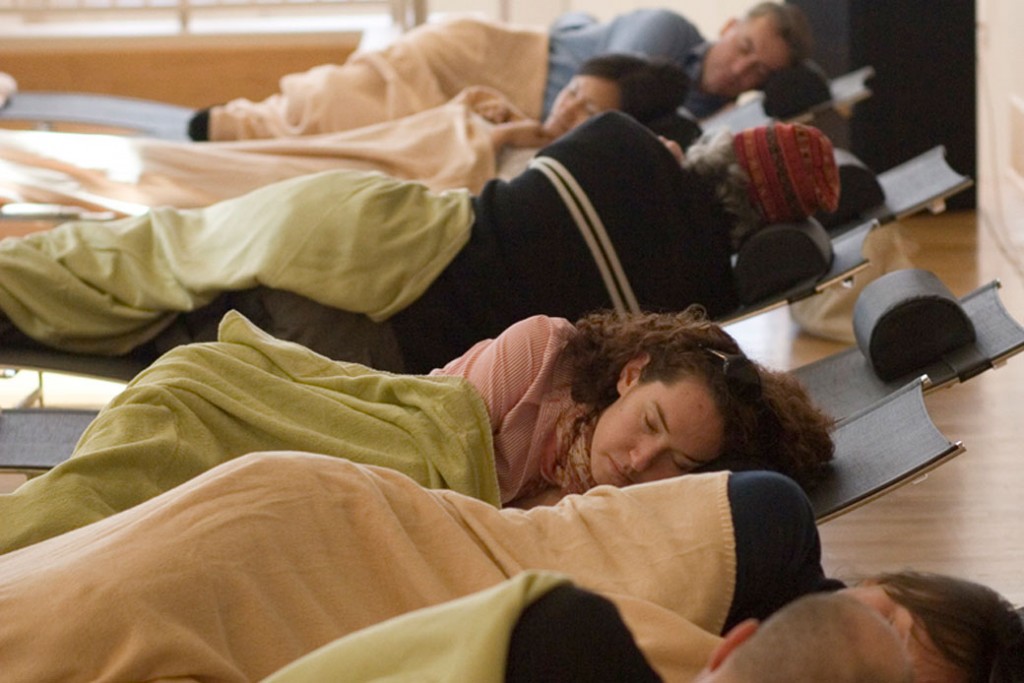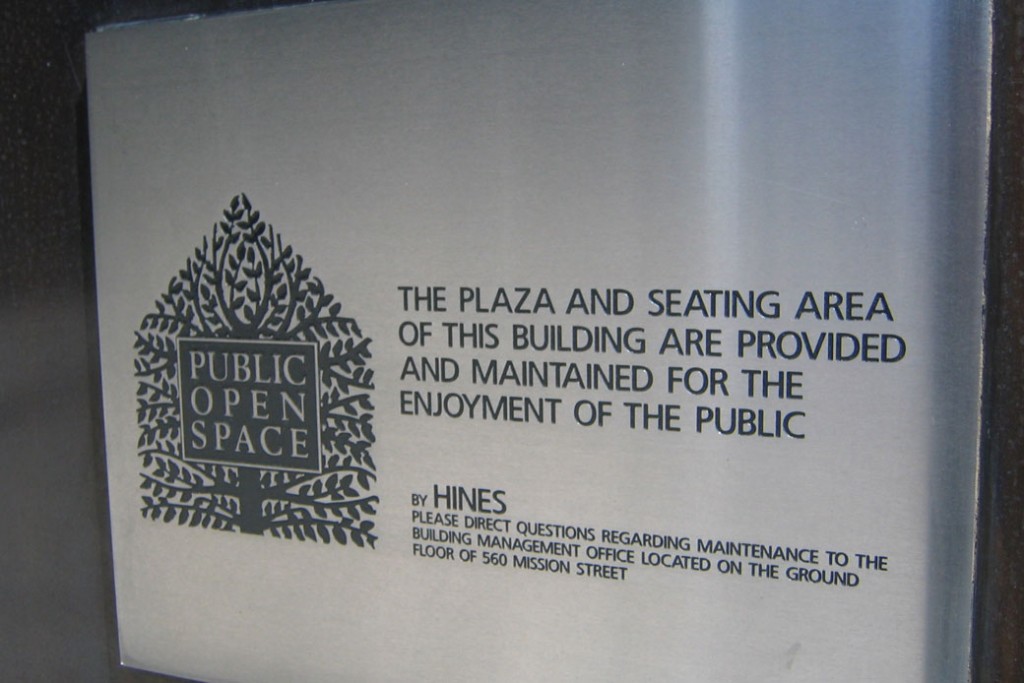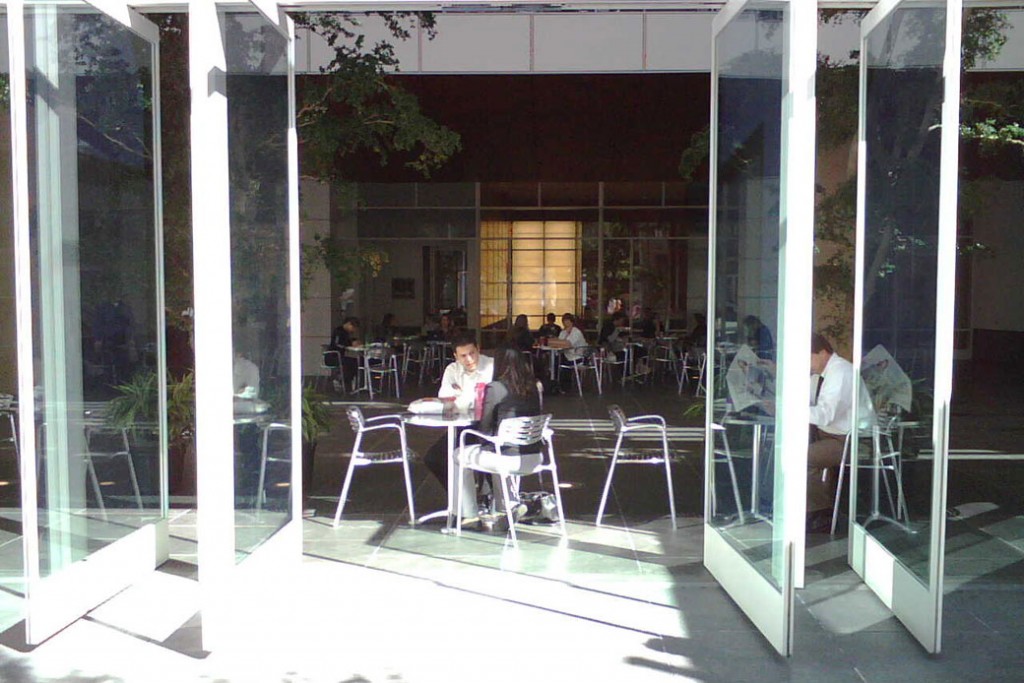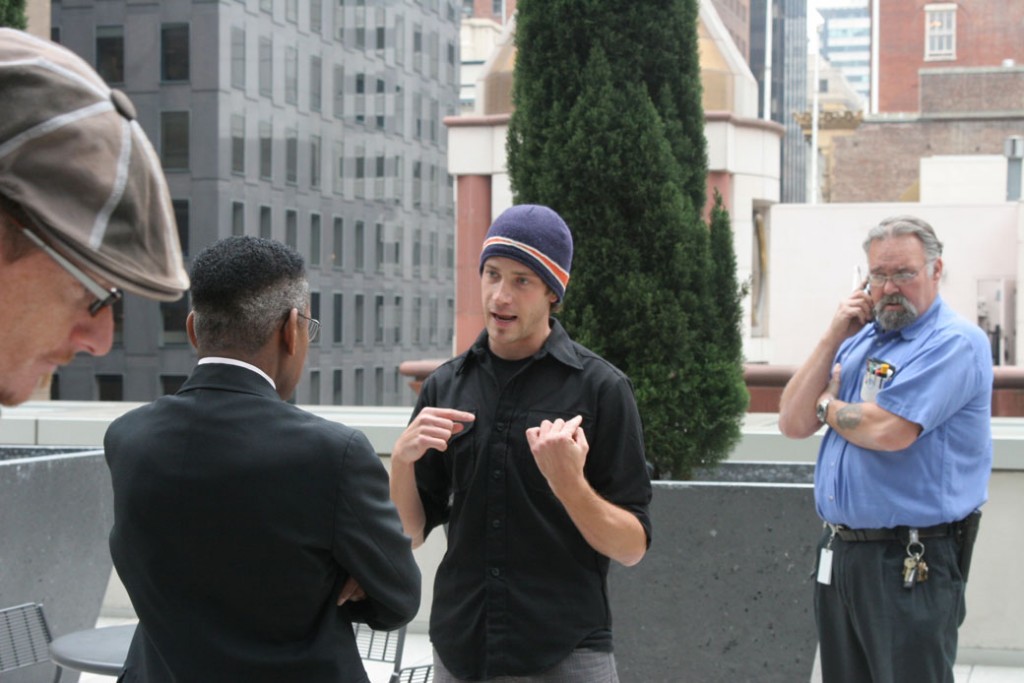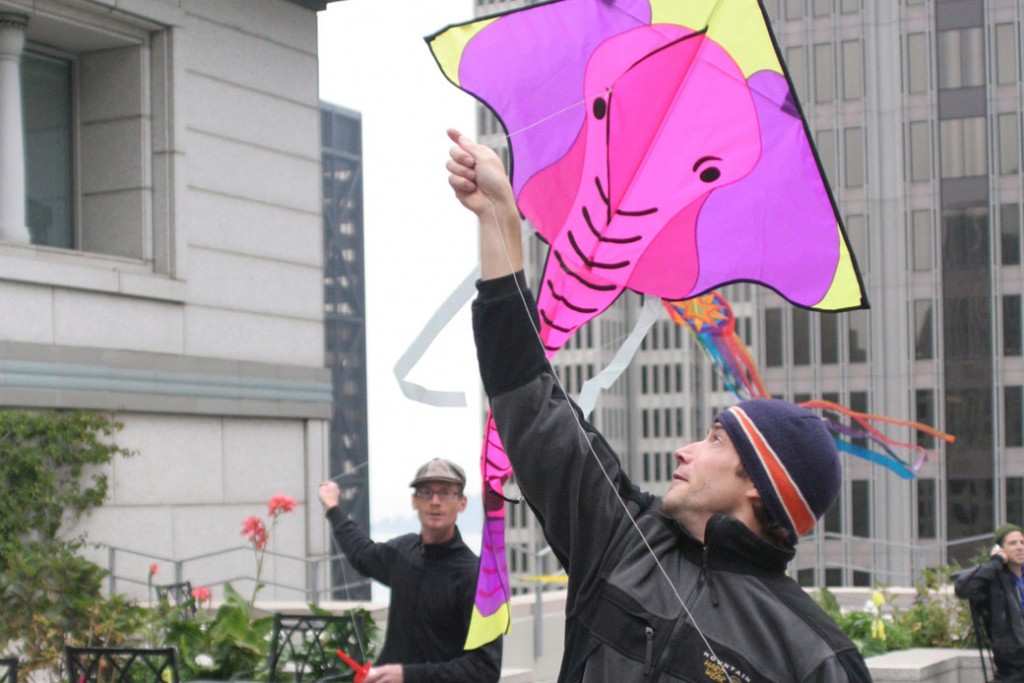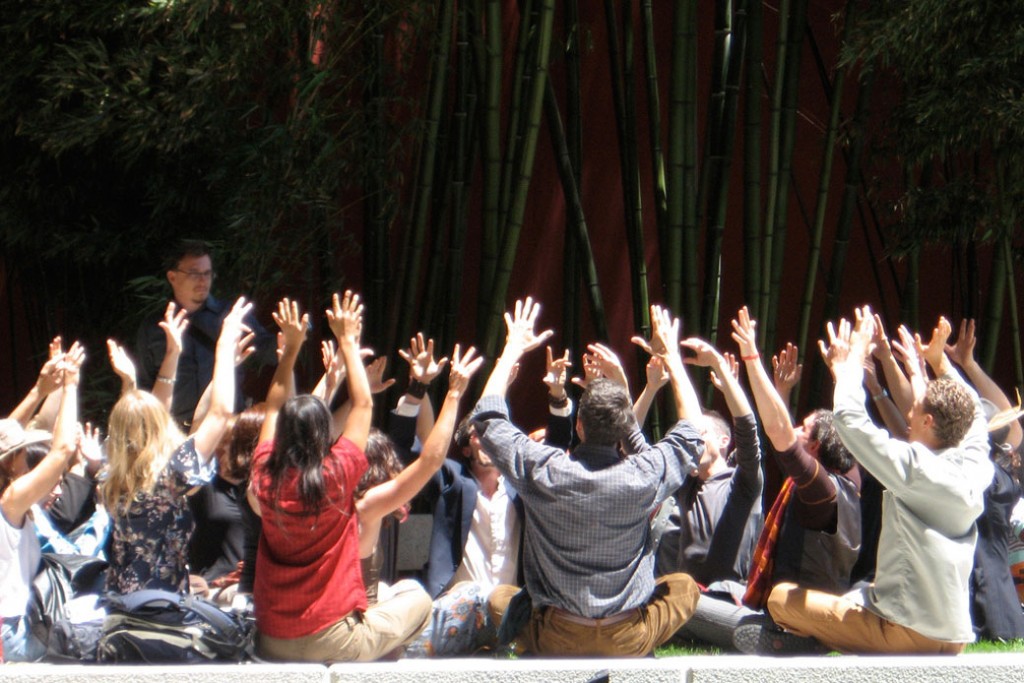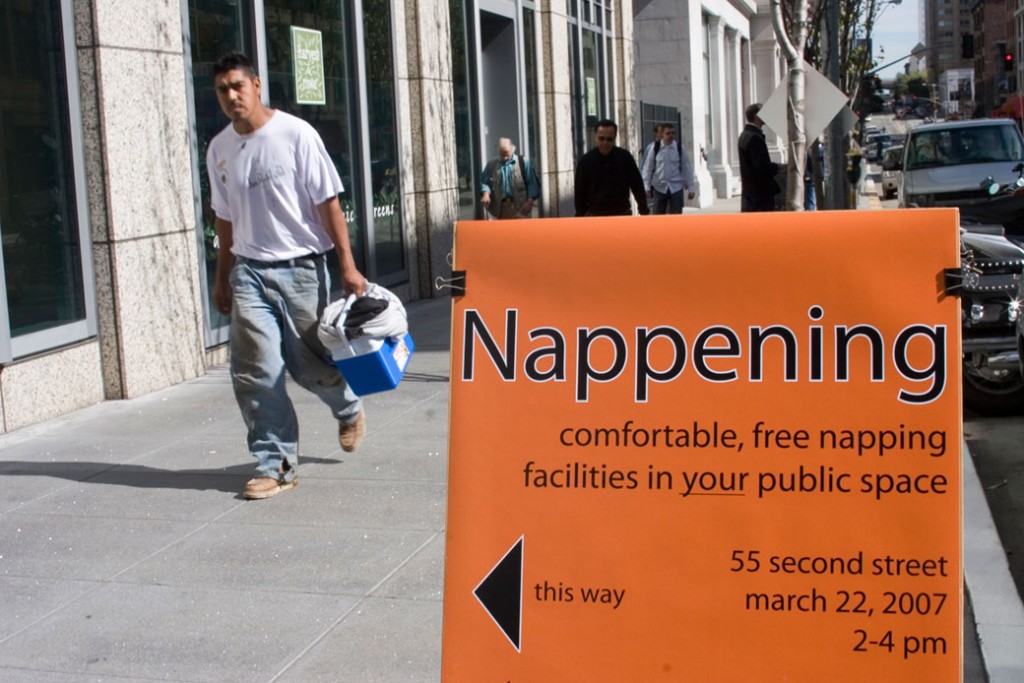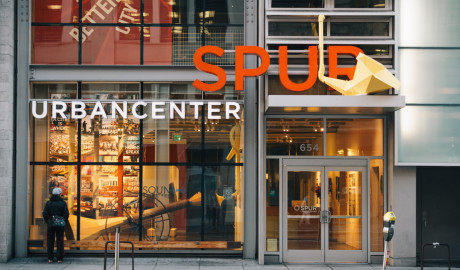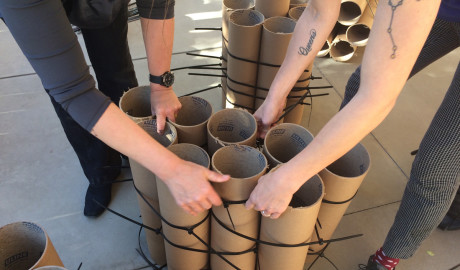Commonspace
An experimental project to map, explore and evaluate San Francisco’s privately owned public open spaces
San Francisco’s privately-owned public open spaces (“POPOS”) have multiplied in the last twenty years, and as major new development is poised to begin downtown, they promise to become even more common. Taking the form of courtyards, plazas, rooftop gardens, and corporate atriums, fourteen POPOS have been created since 1985. San Francisco’s Downtown Plan enabled developers to build high density commercial development in return for providing spaces that were to be “open to the public” during certain hours and provide amenities such as restrooms, shade, and protection from the sun and wind.
However, what appears to be win-win for developers, citizens, and open space advocates masks a deeper question: just how “public” are these spaces? All are under heavy surveillance; some indicate this with signage, but many do not. Unlike traditional public spaces, where surveillance efforts routinely spark a lively debate regarding the security concerns of the state, constitutional rights, and civil liberty interests, surveillance in these sites goes without question. In San Francisco’s POPOS, the debate appears to be wholly lacking. To what extent, then, should a public space under the unblinking eye of private ownership be called “public” at all?
To explore these questions, REBAR initiated the Commonspace project. Starting in May 2006, REBAR set out to map, document and probe the explicit and unspoken rules of San Francisco’s POPOS. First, REBAR gathered vital data on the fourteen sites and created a web-based forum for publishing field reports from anyone visiting the sites. Next, in partnership with performance arts group Snap Out of It, REBAR will activate the fourteen POPOS with a series of “paraformances“: performance actions inspired by the field reports and designed to probe the spaces’ implicit social codes. The paraformance–an intentional reframing of reality–often begins subtly, as a playful, “plausibly deniable” action by a single individual, and can culminate in full scale, “flash mob”-style occupations that engage the participation of their accidental audiences.
The particular legal status of POPOS is, as yet, apparently undetermined. What rights are protected there and how behaviors may be regulated, is not elucidated by the any of the city’s municipal codes. Although they are legally required to be labeled “open to the public”, it is not certain whether POPOS have the similar protection of rights as traditional public space.
To what extent, then, can these spaces be considered legally “public”?
Further Reading
SPUR (San Francisco Planning and Urban Research) Report on POPOS Inspired by Rebar’s Commonspace project!
SPUR (San Francisco Planning and Urban Research) “Agenda for Change” Includes a discussion of POPOS as part of the fabric of San Francisco’s public spaces.
Kayden, Jerold. Privately owned public open space: The New York City Experience. [Amazon] [Author’s web site] An exhaustive inventory of NYC’s POPOS, which preceded San Francisco’s by about 20 years.
Commonspace is a Rebar project.

